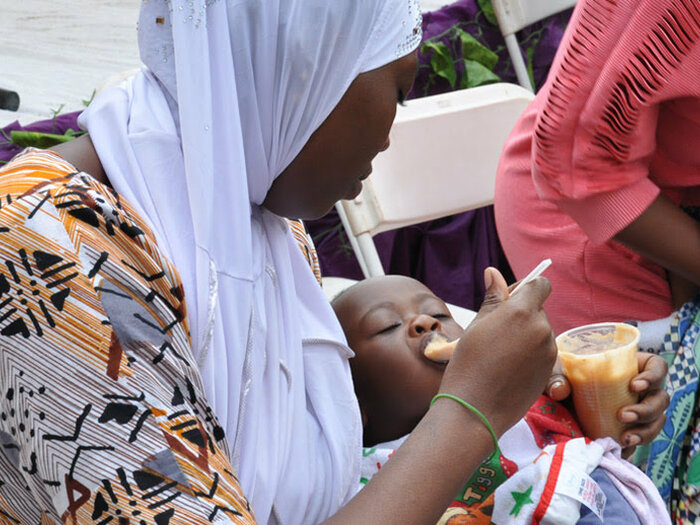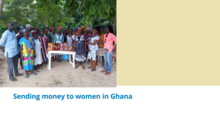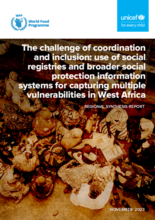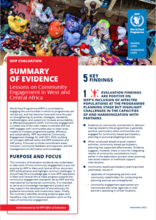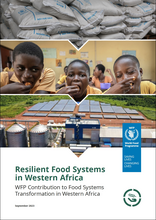Ghana
- 24.2%
- of people live below the national poverty line
- 63 years
- life expectancy at birth
- 28.8 million
- population
The Republic of Ghana is a West African nation on the Gulf of Guinea. It is renowned within the sub-region for its stability and democratic governance, and over the past 20 years it has made progress in reducing poverty and hunger among its population. However, improvements at the national level mask huge inequalities between the north and south of the country, and between rural and urban areas. Hunger and malnutrition persist primarily in northern Ghana, as well as many rural and periurban communities across the country.
The disparity between the north and the south is in large part due to Ghana’s geography which is characterized by marked climate, agro-ecological and economic differences. Agriculture in Ghana is mostly rain-fed, with less than one percent of cultivated land being irrigated. Farmers in southern Ghana are therefore able to grow more food because they have two rainy seasons, while the north has only one. In common with neighbouring Sahelian countries, the north is experiencing increasingly erratic rainfall with long dry periods due to climate change.
What the World Food Programme is doing in Ghana
-
Private sector integration
-
To help prevent stunting and vitamin and mineral deficiencies, WFP is supporting the private sector’s capacity and willingness to produce and market affordable and safe fortified nutritious foods which comply with international standards. WFP provided two companies with technical and financial support and linked them with smallholder farmers. Currently, the two factories produce Tomvita and Maisoya for pregnant and nursing mothers and are preparing new factory lines to produce complementary foods for children.
-
Nutrition
-
Focusing on the first 1,000 days from conception to the child’s second birthday, our programmes target pregnant and nursing women, adolescent girls and children between the ages of 6 months to 2 years. We work with government institutions to encourage people to eat local nutritious foods and adopt healthy behaviours. We provide electronic vouchers for pregnant women, nursing mother and vulnerable children under 2 for nutritious supplementary foods.
-
Strengthening national food systems
-
Aiming to increase the availability, access and utilization of staples foods – mainly maize, millet, cowpeas and soybeans – we link smallholder farmer groups to markets. For example, we have linked 10,000 smallholder farmers to two industrial agro-food processing companies that produce specialised blended nutritious foods. We work with Government and private sector actors to set up modern and more efficient food supply chain systems, and provide appropriate post-harvest facilities, technologies and services that guarantee food safety and quality standards. Small-scale women processors of blended flours are being trained to produce safe, nutritious foods in their communities.
-
Capacity strengthening and policy-making
-
WFP is providing technical support to Ghana’s food security and social protection programmes and helping to establish policies and frameworks for programmes that fight malnutrition, build sustainable food systems and promote gender equality. This includes ensuring that the national school feeding programme provides nutritious foods to children and is linked to agriculture. We are supporting government institutions to monitor food security and promote measures which improve food quality and safety and emergency preparedness.
Ghana news releases
Go to pageFind out more about the state of food security in Ghana
Visit the food security analysis pageContacts
Office
No. 7, 7th Rangoon Close, Cantonments, Accra, P.O. Box GP 1423
Accra, The Republic of Ghana
Ghana

